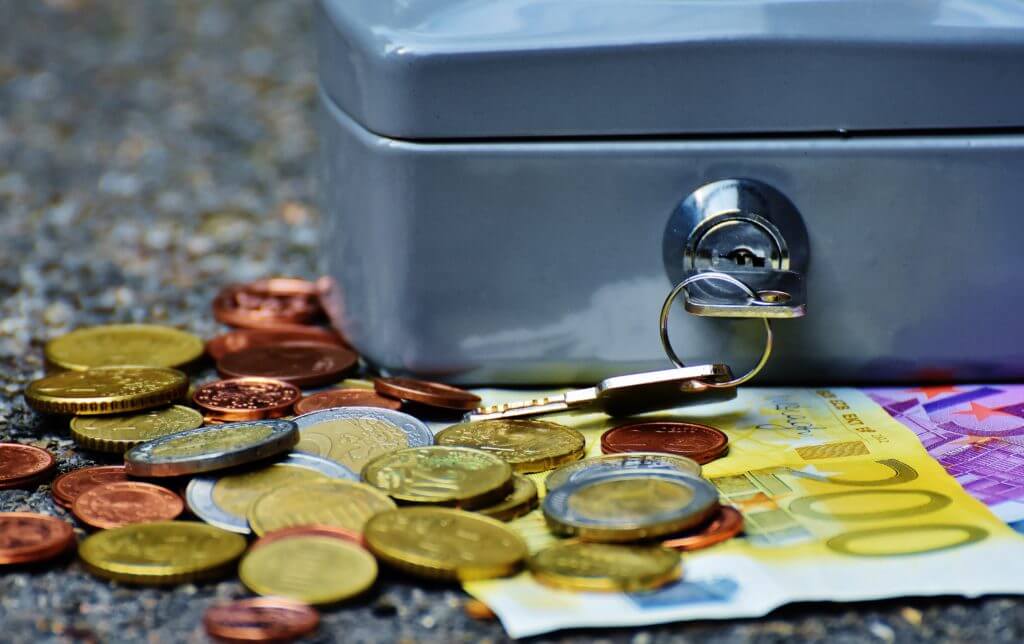
How to Budget for a Thru-hike
My goodness, budgeting can be tough! Budgeting enough to take off several weeks or months at a time is even harder? So, how is it that so many people embark on thru-hikes every year? How do they afford it?
This post will explain several ways in which you can budget for a thru hike, whether you are new to the game or a thru hiking veteran.
How Much Does a Thru Hike Cost?
What an excellent question. The answer is simple: it depends on you. Trail expenses vary from person to person and within different sections of the trail.
It also depends on which thru hike you want to pursue, how fast you hike (i.e. how many days you’ll be on the trail), and how much gear you already have in your closet. The longer the hike, the more money you’ll have to save.
With that little disclaimer, Backpacker.com has said that $2 per mile would be estimated as the lower end of the spectrum.1 That makes for an easy baseline calculation. Then you can do an inventory to figure out what gear need and budget accordingly.
In my personal experience, that was probably pretty accurate. Unfortunately, that amount was higher than I had anticipated. Having completed a thru hike, I believe I could now hike on a tighter budget. However, the gear learning curve was a large part of my expenses (buying gear to replace original purchases) and I believe that is probably true for most people.

The Basics of Budgeting
No doubt we all understand that to save money, you have to earn more than you spend. Budgeting for a thru hike follows the same basic principles as every other budget.
Savings = Income – Expenses
There are two major ways to tip the scales in your favor.
First, you can make more money. If you have more $$$ coming in, then your expenses can stay just the way the way are.
Second, you can reduce your spending.
If you are looking for a more detailed breakdown of what a budget would look like, you can find more information “here”.
Create Your Budget
- Awareness is the key to getting where you want to be. So, the first step is taking a look at your current balance.
- Figure out how much money you bring in every month. Are there factors that influence your income from month-to-month? If so, calculate the average.
- Examine what you have previously spent money on. Determine how much you spend in a month (“money tracking”), and break it down into categories. You can break it down however you want, but make sure to divide the essentials from disposable income. (Disposable income is the income remaining once all required bills have been paid). Money tracking will be discussed further in the “How to reduce spending” section of this post.
- Think about what your financial goals are. Set idealistic short-term, mid-term, and long-term goals. You may have to make modifications to these goals and shift timelines, but ambition is a good motivator! These goals are probably what brought you here in the first place, so it’s good to keep them in mind!
Now that you’ve gathered this information, it’s time to draft your first budget plan. It can change as you go and test things out, but it’s good to have a starting point. Something to keep you accountable for your spending.
How to Earn More Money
I think you know where I’m going with this. To earn more money, you either need to make more money doing what you are already doing or you need a second income source.
Both strategies will increase the income side of the budget equation, and you can put the difference in your savings account.
How can you make more money doing what you are already doing?
You can ask for a raise or promotion! I will note that asking for a raise or promotion may not be the best option as it may raise some questions about morality.
Knowing in the back of your mind that the reason you need more money is to ditch them for 5-6 months is kind of inconsiderate if you think about it.
On the other hand, it may be beneficial if you intend to return to the same company and it does put you in a stronger negotiating position if you go job hunting after the trail. This is really a judgement call.
If you do decide to go this route, make sure to do some market research beforehand. Check out what the average salary is for a worker in your position and compare it to yours.
Composing a compelling list of what you bring to the table, along with an informed and well thought-out presentation to your boss may end in success. (Don’t just walk in and ask for more money, because that is not likely to go your way).
I would recommend researching the best way to negotiate a raise or promotion, as I am not an expert on this subject matter.

Adding a Second Income Source
Getting a second part-time job may be a good way to save enough money to increase your thru hike budget. In fact, aside from some money-saving strategies, this is the best way to pay for your travels.
The trick is to set aside ALL THE MONEY YOU EARN from this job in a separate account, so that you can’t be tempted to spend it on anything other than your thru hike. If you have the job to save for your thru hike, it is only fitting that the money you make at the job be set aside.
I got a job doing a paper route. At 24 years old. It was not exactly the best job I’ve ever had, but it allowed me some degree of flexibility during the day and minimal time commitment (I was also a student at the time). I was able to put some money into my savings, and that was why I sought out the job in the first place. Was I proud to say I was a paper delivery person? Nope. However, I am happy I did it, because it helped me get where I wanted to be. On trail.
I would probably recommend serving at a restaurant as the best bang for your buck (unless you are trained in something specific where you can earn more).
There are typically entry-level positions for serving, and you can make a considerable amount in tips on top of an hourly wage.
Some alternative income sources include:
- Sponsorships + brand deals
- GoFundMe Page
- Create your own side hustle (Although, I don’t think I would recommend that. It is unlikely to turn a profit right away.)
How to Reduce Your Spending
As previously mentioned, it can help to create a separate bank account solely for thru hiking. If your money is separate, you won’t be drawing money from it by accident.
When I first chose to hike the Pacific Crest Trail, I decided to cut out alcohol and fast food in order to save for the trail. I figured it would work 2-fold by cutting my expenses and encouraging me to live a little healthier lifestyle in the months prior to hiking.
My recommendation would be to do a bit of money tracking, and see where most of your money goes. The larger expenses are where you want to cut back, if at all possible. They will make the largest impact on your ability to save.
While larger areas of spending are significant on their own, don’t neglect smaller expenses! They have a secret power. All of those little $10-20 monthly subscriptions seem harmless on their own, but I’m willing to bet there’s a handful of them on your credit card bill every month.
Their price evades detection, because $10/month doesn’t seem so bad. Keep in mind, that’s still $120/year! If you have 5 of those $10/month subscriptions, that’s $600 right there! Ask yourself if you really need those 3 different tv subscriptions, or if 1 would do the trick!
If you are looking for ways to improve this part of your thru hike budget, check out my guest post, “7 Ways to Get the Best Value Out of Doing What You Love (Without Earning More Money!)”. Within this post there are actionable tips that help you become a more conscious and intentional spender, so that your money can go where it is most beneficial to you.

Pay Off Your Credit Cards
This needs to be said. Credit cards are a great tool for building credit, but only if you are consistently paying off what you charge to them.
Paying only the minimum balance due means you are paying an extremely high interest rate on top of the original price. Avoid charging large sums to your credit cards unless you have the funds to pay it off right away.
Start Saving Now to Increase Your Thru-Hike Budget On-Trail!
How fast you save will really depend on how much you earn already, how much time you have (for a second job), how good you are at sticking to a budget, how much gear you have to buy, and the list goes on…
Just start saving! If you know you want to go. Even if you are just considering a thru-hike, start saving now. By the time you decide, you will either be really happy you have a head start or you will be happy to put the savings toward something else! There’s really no downside.
When on trail, you are not likely to bring in any income, but there are still expenses. The more you save now, the more money will be in the budget for your thru hike. It is also nice to have a little bit of cushion in your budget, because unexpected expenses always arise.
Let me know what strategies you use to find money to do what you love, or if you have any questions regarding this post!
Happy hiking,
Taylor King (A.K.A. Slaughterhouse)
References
1 Thomas, Liz “Snorkel”. “Ask a Thru-Hiker: How Much Does a Thru-Hike Cost?”. Backpacker, 08/24/16, https://www.backpacker.com/trips/long-trails/ask-a-thru-hiker-how-much-does-a-thru-hike-cost/.



